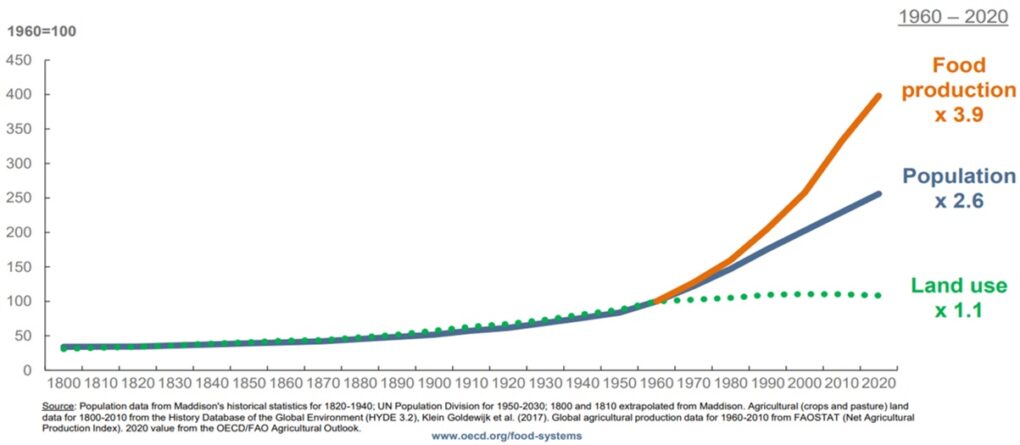“Innovation is fully capable of safely contributing to increased sustainability.”
Agriculture resulted from asking, “What can we change about nature to get more food?”
.
The government has promised a balance between sustainability on the farm and producing more food: Thérèse Coffey: Farmers central to food production and environmental action – GOV.UK
There is a lot of scepticism however: How well is the Sustainable Farming Incentive going in Devon? – Vision Group for Sidmouth
Perhaps we need to be ‘more innovative’? Innovative ways ahead for farming – Vision Group for Sidmouth
Dr Stuart Smyth and agronomist Andrew McGuire look at the balancing act on the farm:
Economic profitability, environmental sustainability and food security
The language and voice of Malthus is echoed in much of the modern day environmental discourse, particularly the myth espoused by many that there are only 60 harvests remaining on Earth. The ghost of Malthus can also be found underlying two central notions of those who advocate for environmental protection at all costs. First, humanity will need to reduce its economic expectations, living less wealthy lives than their parents and second, that the planet currently produces enough food to feed everyone...
Innovation is fully capable of safely contributing to increased sustainability, as has been widely proven over the past 60 years of increased food production, with only minimal increases in land use. Science, products, and technologies can contribute to improved environmental sustainability, reduced food insecurity, and greater farmer profitability. The question that society needs to ask is not, will you willingly live a less affluent lifestyle, but rather, will you allow innovation to live up to its full potential, free of political interference?
Economic Profitability, Environmental Sustainability, And Food Security – SAIFood

Biodiversity, healthy soils, and their combination in regenerative agriculture can reduce but not replace fertilizer
People inside and outside of science like to point to how nature needs no inputs, yet still produces. Then they wonder why agriculture cannot do the same. If we could just mimic nature on the farm, work with nature, then we would not need these costly inputs with undesired environmental impacts. If we could just restore natural soil fertility, we could give up “hazardous chemical fertilizers.” This theme of “natural processes can replace external inputs” is central to regenerative and organic agriculture, and agroecology, but is it possible? Here I will explore how far biodiversity, soil health, and soil biology can take us in replacing synthetic fertilizers...
“What can we change in agriculture to make it more like nature?” is the wrong question. Agriculture resulted from asking, “What can we change about nature to get more food?” It should not be surprising that most common result of making agriculture more like nature is less food. Therefore, we need an agriculture different from nature, one that produces lots of food. Such an agriculture will run differently from nature, it must. While some aspects of nature may be instructive, many are not, because nature is not agriculture, agriculture is not nature.
.